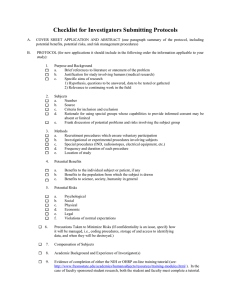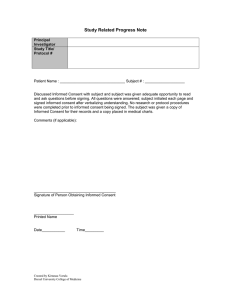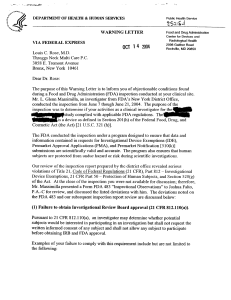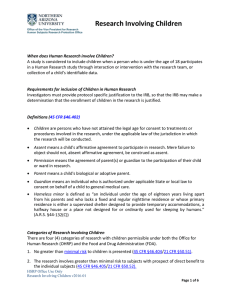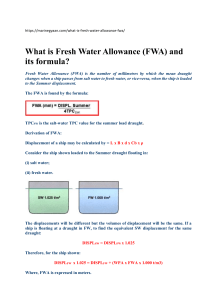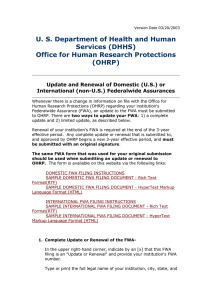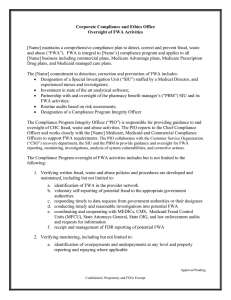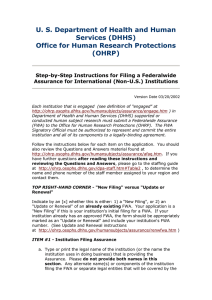GLOSSARY TERMS
advertisement
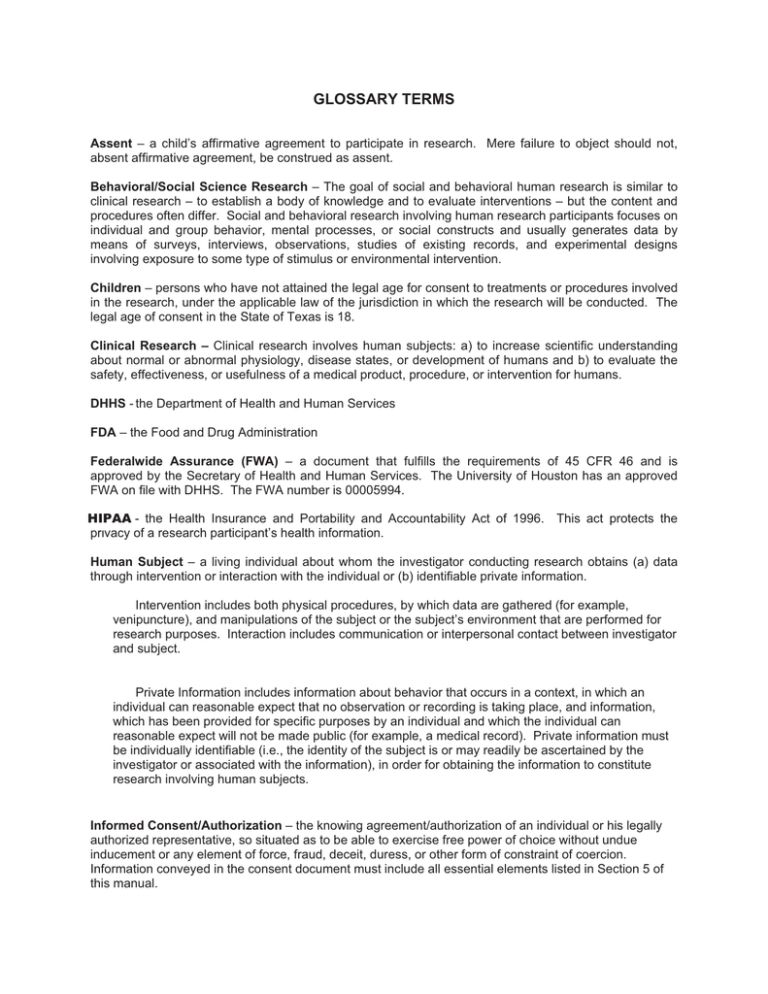
GLOSSARY TERMS Assent – a child’s affirmative agreement to participate in research. Mere failure to object should not, absent affirmative agreement, be construed as assent. Behavioral/Social Science Research – The goal of social and behavioral human research is similar to clinical research – to establish a body of knowledge and to evaluate interventions – but the content and procedures often differ. Social and behavioral research involving human research participants focuses on individual and group behavior, mental processes, or social constructs and usually generates data by means of surveys, interviews, observations, studies of existing records, and experimental designs involving exposure to some type of stimulus or environmental intervention. Children – persons who have not attained the legal age for consent to treatments or procedures involved in the research, under the applicable law of the jurisdiction in which the research will be conducted. The legal age of consent in the State of Texas is 18. Clinical Research – Clinical research involves human subjects: a) to increase scientific understanding about normal or abnormal physiology, disease states, or development of humans and b) to evaluate the safety, effectiveness, or usefulness of a medical product, procedure, or intervention for humans. DHHS - the Department of Health and Human Services FDA – the Food and Drug Administration Federalwide Assurance (FWA) – a document that fulfills the requirements of 45 CFR 46 and is approved by the Secretary of Health and Human Services. The University of Houston has an approved FWA on file with DHHS. The FWA number is 00005994. HIPAA - the Health Insurance and Portability and Accountability Act of 1996. This act protects the privacy of a research participant’s health information. Human Subject – a living individual about whom the investigator conducting research obtains (a) data through intervention or interaction with the individual or (b) identifiable private information. Intervention includes both physical procedures, by which data are gathered (for example, venipuncture), and manipulations of the subject or the subject’s environment that are performed for research purposes. Interaction includes communication or interpersonal contact between investigator and subject. Private Information includes information about behavior that occurs in a context, in which an individual can reasonable expect that no observation or recording is taking place, and information, which has been provided for specific purposes by an individual and which the individual can reasonable expect will not be made public (for example, a medical record). Private information must be individually identifiable (i.e., the identity of the subject is or may readily be ascertained by the investigator or associated with the information), in order for obtaining the information to constitute research involving human subjects. Informed Consent/Authorization – the knowing agreement/authorization of an individual or his legally authorized representative, so situated as to be able to exercise free power of choice without undue inducement or any element of force, fraud, deceit, duress, or other form of constraint of coercion. Information conveyed in the consent document must include all essential elements listed in Section 5 of this manual. CPHS – Institutional Review Board established in accord with and for the purposes expressed in 45 CFR 46. Legally Authorized Representative – an individual or judicial or other body authorized under applicable law to consent/authorize on behalf of a prospective subject to that subject’s participation in the particular activity or procedure. Minimal Risk – the risks of harm anticipated in the proposed research are not greater than those ordinarily encountered in daily life or during the performance of routine physical or psychological examinations or tests. [NOTE: The definition for minimal risk for incarcerated persons is different. It is defined as the probability and magnitude of physical or psychological harm that is normally encountered in the daily lives, or in the routine medical, dental, or psychological examination of healthy persons.] OHRP – the Office for Human Research Protections. This is an office in the Office of the Secretary of Health and Human Services responsible for regulatory oversight of human subjects research Research – a systematic investigation, including research development, testing, and evaluation, designed to develop or contribute to generalizable knowledge. Research is defined as both the Common Rule (45 CFR 46) of the Federal regulations and by the Privacy rule of HIPPA.
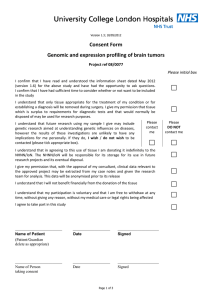
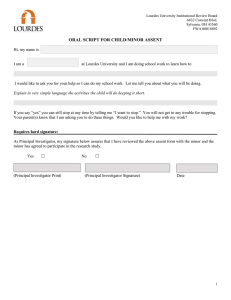
![Lesson Study Project Informed Consent for Students 2011-12 [TEMPLATE]](http://s2.studylib.net/store/data/011897429_1-e9cd20ac12fa907a0c9dbbb5866bfc98-300x300.png)
